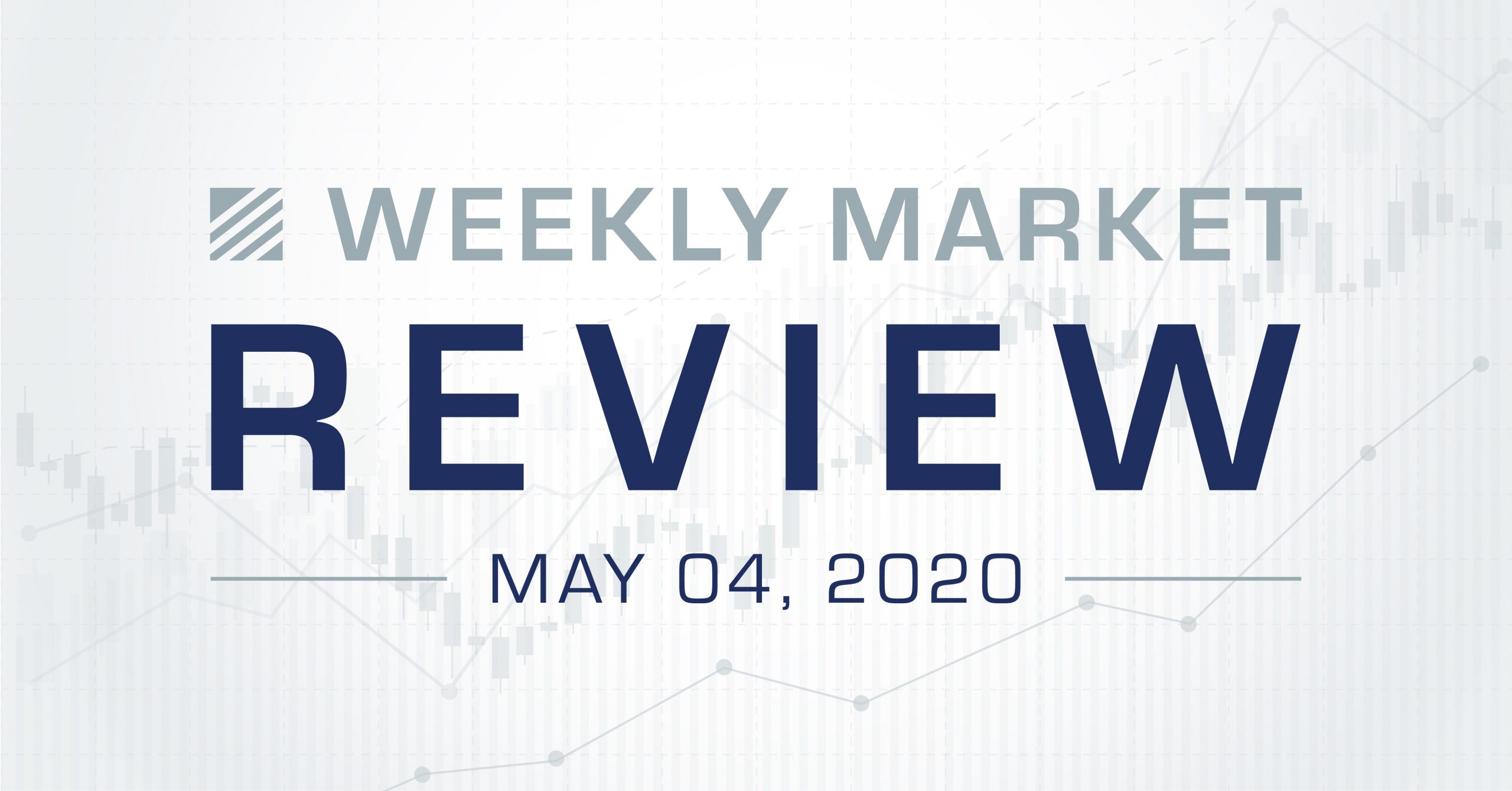
Equity markets reverted to a ‘corona Friday’ last week, giving back the week’s gains heading into the beginning of May, leaving the S&P 500 flat on the week and -10% YTD. Large caps were flat to slightly negative while small and mid-caps managed respectable gains. Cyclical sectors (energy, materials, financials, industrials) had a solid week while defensives (utilities, consumer staples, healthcare) struggled. Commodities posted gains on a bounce higher in oil prices (+14.6%) while longer rates moved higher and the USD fell 1.3%.
Market Anecdotes
- The FOMC meeting this week carried no surprises, pledging to keep rates near zero until we see inflation and full employment again and made clear they intend to use all tools as appropriate.
- ECB responded to the Eurozone’s largest contraction on record (-3.8% Q/Q GDP) and a decade low business confidence reading with more stimulus measures including extending the LTRO, announcing a new “PELTRO” facility, and new corporate lines.
- The FactSet blended S&P 500 earnings growth rate stands at -13.7% while revenue growth is 0.7%.
- The 28% return in the 25-day period through Tuesday ranked as the strongest 25 day move since 1938 (following the biggest 25-day downside move in 80yrs). This warrants a reminder that stocks historically bottom well in advance of earnings – on average about 2 quarters, but as long as 4.
- The disparity between the counter-cyclicals (Utilities, Staples, and Healthcare) vs. the cyclicals (Financials, Discretionary, Industrials) and LC/MC/SC has been pronounced recently, echoing the growing chorus to reopen the economy.
- The S&P 500 failed to hold the 61.8% Fibonacci retracement level (2,934) but still ended the week above the 50% retracement level of 2,797. Small caps (39%) and mid-caps (45%) remain below the 50% retracement level.
- A 30yr UST total return YTD of 28.7% easily outpaces all other years back to 1973. Only 1986 (+23%) was even in the ballpark.
- Bespoke noted HYG and JNK are on pace for over $4.4b of inflows in April after garnering $4.8b in March.
- If you look hard enough, there are some silver linings around the corner. Last week’s durable goods report (- 14%) was dire and is expected to deepen in April. Pent up demand, aged assets, and clean balance sheets make a strong case for recovery once re-openings commence.
- An Oxford University press release reported the first major vaccine news with approval from European regulators and dosages available as early as September.
- In CoVid-19 treatment news, the FDA approved the use of Remdesivir and Japan is expected to deploy the same as early as this month.
- CARES Act, which provided an additional $600b of unemployment benefits made clear that a request that a furloughed employee return to his or her job constitutes an offer of suitable employment that the employee must accept. If not, the worker will lose his or her unemployment benefits – in all but 8 states.
- A fourth fiscal package with key issues surrounding state aid and employer liability protection is being debated with municipal bond markets watching intently.
Economic Release Highlights
- BEA reported Q1 GDP declined by 4.8% (Q/Q AR) with expectations for 2Q between -30% and -60%, in what will undoubtedly be the worst quarterly GDP on record.
- March PCE report had consumer spending -7.5%, wage and salaries -3.1%, personal savings surged 13.1%, and non-existent core PCE inflation of -0.1% (1.7% Y/Y).
- Another staggering weekly jobless claims number (3.84mm) brings total claims over the past 6 weeks to 30mm, which is over 9% of the population.
- Strategas noted that money supply growth is accelerating sharply over the past three months with M1 up 30.1% and M2 up 19.2% annualized.
- The ISM manufacturing survey fell to 41.5 in March.
- February’s Case-Shiller HPI climbed 3.5% YoY and 0.4% MoM.
- April consumer confidence plunged by 31.9 points to 86.9, a record fall and true reflection of the full CoVid19 effect.

